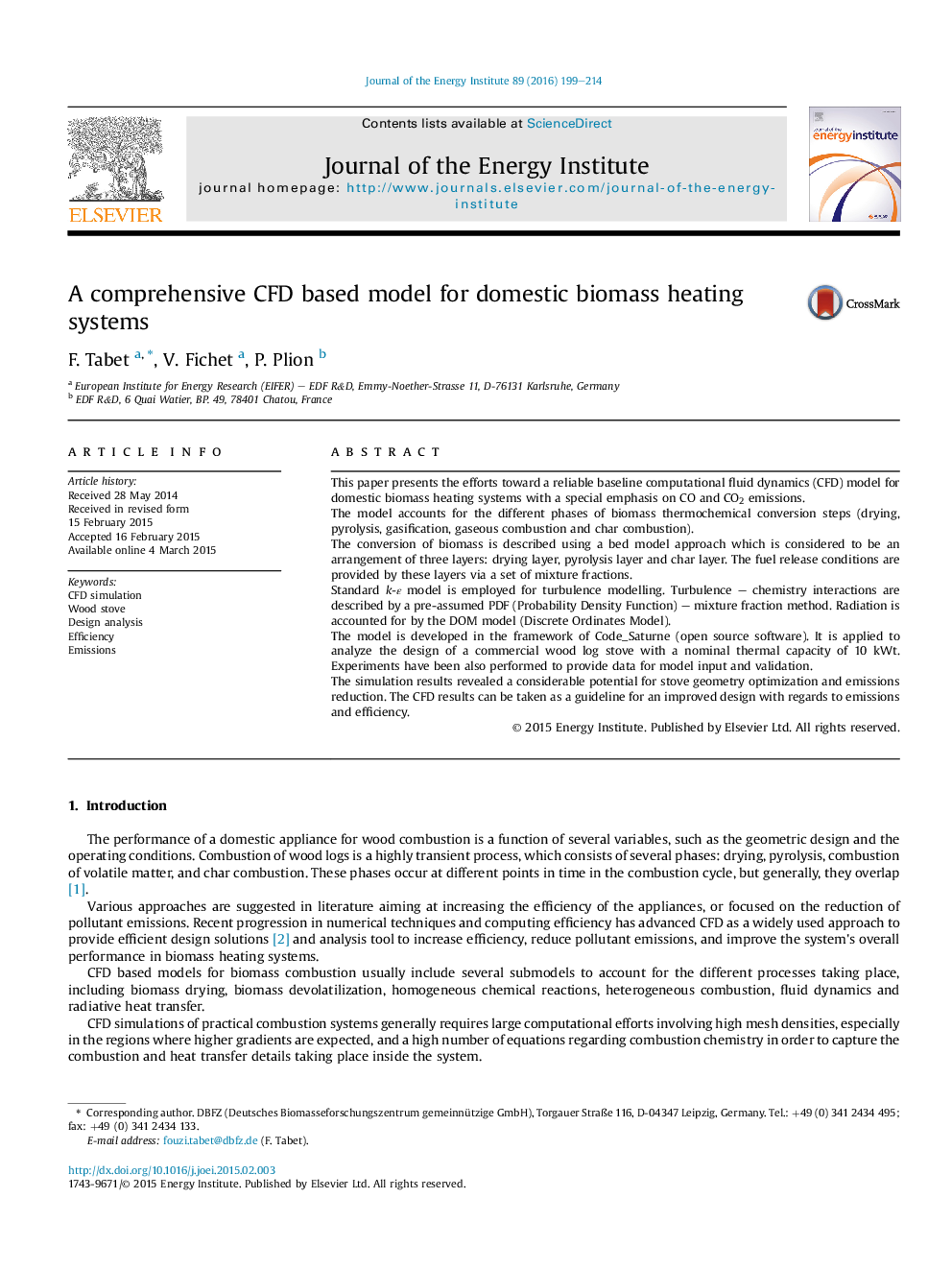| کد مقاله | کد نشریه | سال انتشار | مقاله انگلیسی | نسخه تمام متن |
|---|---|---|---|---|
| 1747645 | 1018238 | 2016 | 16 صفحه PDF | دانلود رایگان |

• Computational fluid dynamics (CFD) model for domestic biomass heating systems with a special emphasis on CO and CO2 emissions.
• The conversion of biomass is described using a bed model approach which is considered to be an arrangement of three layers: drying layer, pyrolysis layer and char layer.
• The fuel release conditions are provided by these layers via a set of mixture fractions.
• The model is applied to analyze the design of a commercial wood log stove with a nominal thermal capacity of 10 kWt.
• The simulation results revealed a considerable potential for stove geometry optimization and emissions reduction.
This paper presents the efforts toward a reliable baseline computational fluid dynamics (CFD) model for domestic biomass heating systems with a special emphasis on CO and CO2 emissions.The model accounts for the different phases of biomass thermochemical conversion steps (drying, pyrolysis, gasification, gaseous combustion and char combustion).The conversion of biomass is described using a bed model approach which is considered to be an arrangement of three layers: drying layer, pyrolysis layer and char layer. The fuel release conditions are provided by these layers via a set of mixture fractions.Standard k-ε model is employed for turbulence modelling. Turbulence – chemistry interactions are described by a pre-assumed PDF (Probability Density Function) – mixture fraction method. Radiation is accounted for by the DOM model (Discrete Ordinates Model).The model is developed in the framework of Code_Saturne (open source software). It is applied to analyze the design of a commercial wood log stove with a nominal thermal capacity of 10 kWt. Experiments have been also performed to provide data for model input and validation.The simulation results revealed a considerable potential for stove geometry optimization and emissions reduction. The CFD results can be taken as a guideline for an improved design with regards to emissions and efficiency.
Journal: Journal of the Energy Institute - Volume 89, Issue 2, May 2016, Pages 199–214